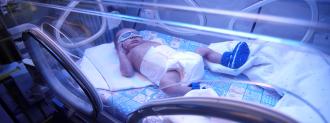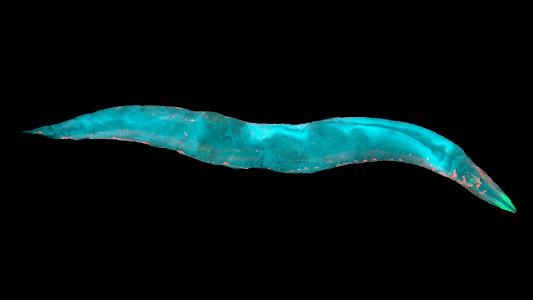Infant jaundice is a common condition, especially among preterm babies. While jaundice usually clears up on its own, it can lead to hearing loss and brain damage in severe cases.
Shining a halogen or fluorescent lamp on the infant, known as phototherapy, can easily treat infant jaundice, breaking up a pigment in the bloodstream which causes the condition’s trademark yellow coloration of the skin and eyes. But it has to be caught quickly.
Using that yellow to their advantage, researchers at the University of South Australia and Baghdad’s Middle Technical University have created a camera system for hospitals that recognizes infant jaundice and begins light therapy automatically.
“This can be done in one second, literally, which can make all the difference in severe cases, where brain damage and hearing loss can result if treatment is not administered quickly,” study author Javaan Chahl of the University of South Australia (UniSA) said.
While jaundice usually clears up on its own, it can lead to hearing loss and brain damage in severe cases.
What is infant jaundice? According to the Mayo Clinic, infant jaundice is usually caused by the nascent liver being unable to clear a yellow pigment from red blood cells called bilirubin from the baby’s blood.
Generally, the jaundice clears when the liver becomes mature enough to mop up the bilirubin.
In some cases, however, infant jaundice can have a different underlying cause; infections, liver malfunctions, enzyme deficiencies, and abnormal red blood cells — e.g., sickle cell — can all cause jaundice.
While a baby’s yellow skin may be only a bit concerning, infant jaundice can have serious health complications in rare cases. Bilirubin is toxic to the brain cells. If the pigment gets to the brain, it can cause difficulty waking, arching of the back, and fever — signs of acute bilirubin encephalopathy.
Hearing loss, uncontrollable movement, and permanent upward gaze can all result if the damage is severe.
Rapid treatment can prevent bilirubin from severely damaging the brain. Phototherapy clears the bilirubin by adding oxygen to it, causing the pigment to become more easily dissolvable in water, giving the liver a hand.
But speed is of the essence.
Shining a halogen or fluorescent lamp on the infant can easily treat infant jaundice. But it has to be done quickly.
Catching jaundice: The Australian and Iraqi teams’ system, published in the journal Designs, looked to not only spot infant jaundice and administer treatment as quickly as possible, but to avoid the risks and difficulties other jaundice monitoring methods may have.
As New Atlas points out, other optical devices that key off the yellow color to spot jaundice, like attached sensors, already exist. But the researchers saw room for improvement.
“Previous research using sensors to find a non-invasive way to detect jaundice has fallen short,” Chahl said. “Methods trialled have been unreliable, costly, inefficient and in some cases caused infections and allergies where sensors needed skin contact.”
The new system is 100% contact-free. Placing the baby under a standard webcam, an attached microprocessor monitors the feed, looking for that telltale yellow coloration. When it detects it, the processor kicks on the phototherapy and sends an alert to caregivers, who can check on the infant.
“Using image processing techniques extracted from data captured by the camera, we can cheaply and accurately screen newborns for jaundice in a non-invasive way, before taking a blood test,” Chahl said.
“This can be done in one second, literally, which can make all the difference.”
Javaan Chahl
The system was tested on 20 newborns diagnosed with infant jaundice in an ICU in Mosul, and proved accurate, affordable, and easy to use. It was further tested on images of newborns both with and without jaundice, and manikins simulating light and dark skin coloration.
More testing will come before the system rolls out, but the researchers have already identified one potential problem: the computer vision in the camera needs adequate lighting to work properly. Without proper lighting, the diagnoses were inaccurate, the researchers wrote. A system that incorporates night vision and an infrared camera may overcome this deficiency, however.
Helping where it’s needed most: Infant jaundice is most prevalent in the developing world, where a lack of resources and trained personnel demands cheap, accurate, and mostly automated systems for catching and treating it.
“It could be widely used in hospitals worldwide and medical centres where laboratory facilities and trained medical staff are not available,” Chahl said.
We’d love to hear from you! If you have a comment about this article or if you have a tip for a future Freethink story, please email us at [email protected].






